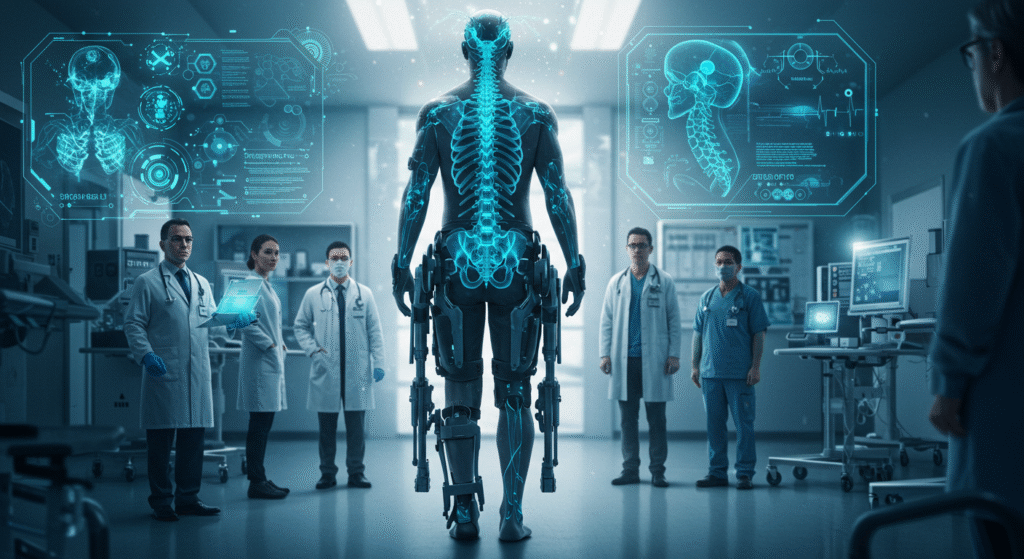
✨ Tetraplegia: New Hope to Walk Again ✨
From brain implants to regenerative medicine, science is unlocking the impossible. Patients once bound to a wheelchair are now taking their first steps again.

🔬 How Science Is Rebuilding Broken Connections
When the spinal cord is damaged, the communication highway between the brain and muscles shuts down. New technologies are creating a digital bridge — bypassing the injury and restoring control.
- Brain-Spinal Bridge: Brain signals are captured, decoded by AI, and sent directly to the spinal cord below the injury.
- Neural Chips: Tiny processors translate thoughts into movement, allowing patients to move arms, hands, and legs again.
- Regenerative Drugs: Biomaterials like polylaminin promote healing and reconnect nerve pathways.
🌍 Real People, Real Success
In 2023, a man in Switzerland with complete tetraplegia stood and walked again thanks to a brain-spinal interface. His first steps weren’t just physical — they symbolized a revolution in medicine.
Other patients are regaining hand control, opening doors to independence in daily life. What once felt like science fiction is now scientific reality.
🇧🇷 The Brazilian Breakthrough: Polylaminin
Scientists in Brazil, together with UFRJ and Cristália Lab, developed polylaminin, a placenta-derived protein. Early studies suggest it can help regenerate the spinal cord, giving patients a second chance at mobility. While awaiting regulatory approval, it shines as one of the most exciting discoveries worldwide.
⚠️ Why Recovery Is Different for Everyone
Not every case has the same outcome. Recovery depends on:
- Injury location and severity
- Time since the accident
- Health condition and age
- Access to advanced rehab centers
This is why medical guidance is essential before trying experimental treatments.
🚀 The Future: From Hope to Reality
Step by step, breakthroughs are becoming treatments. The future of tetraplegia recovery is brighter than ever, combining: